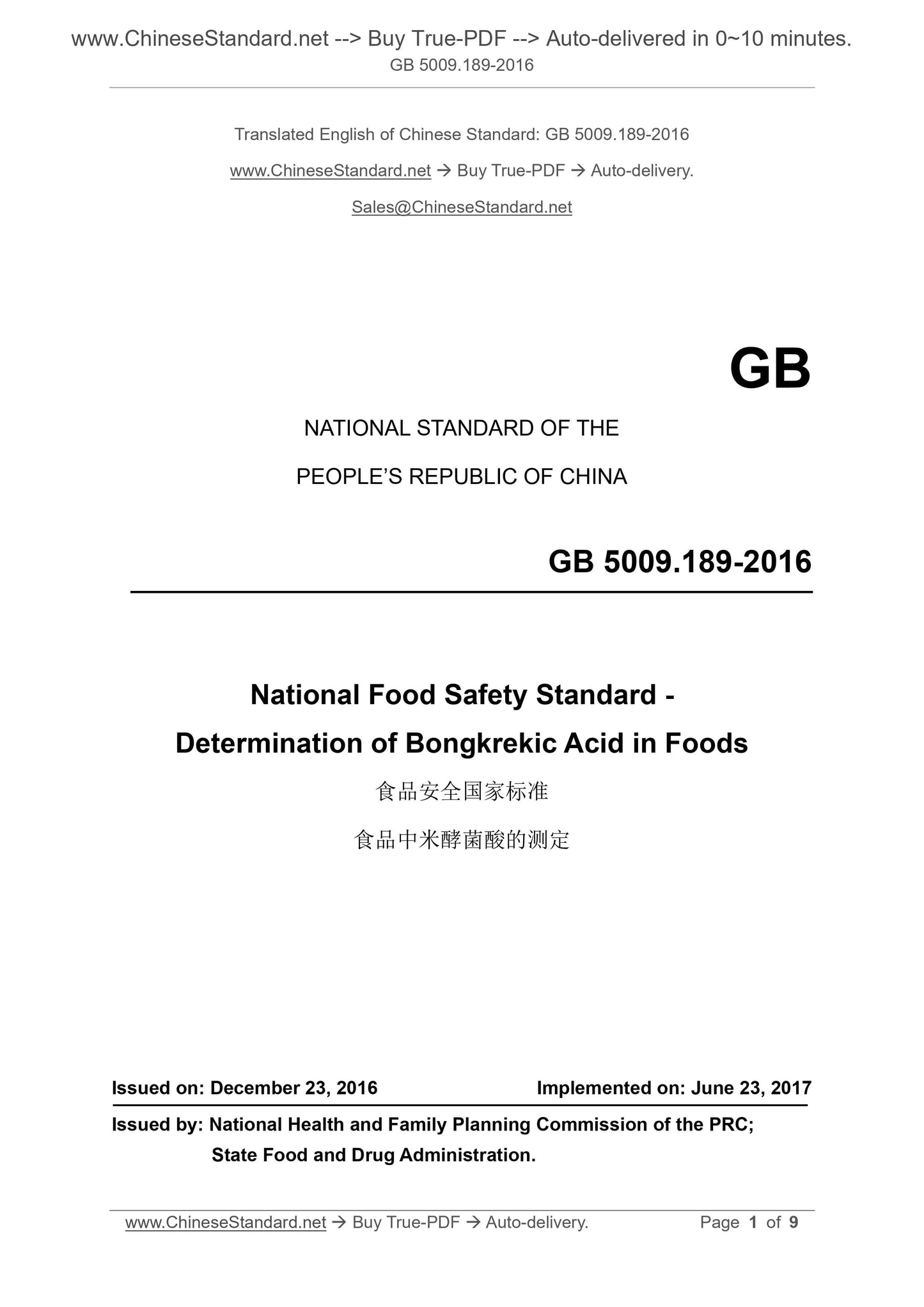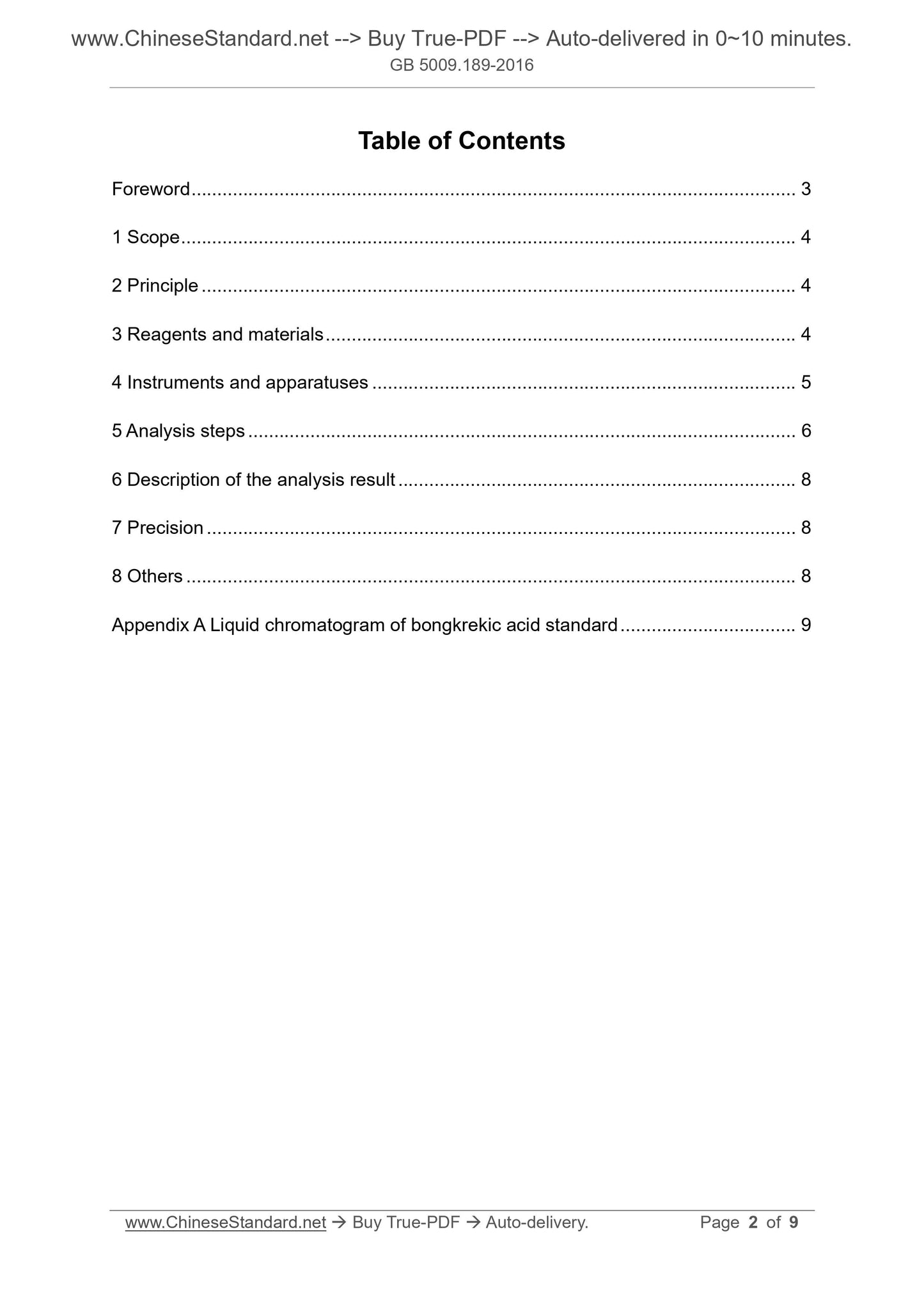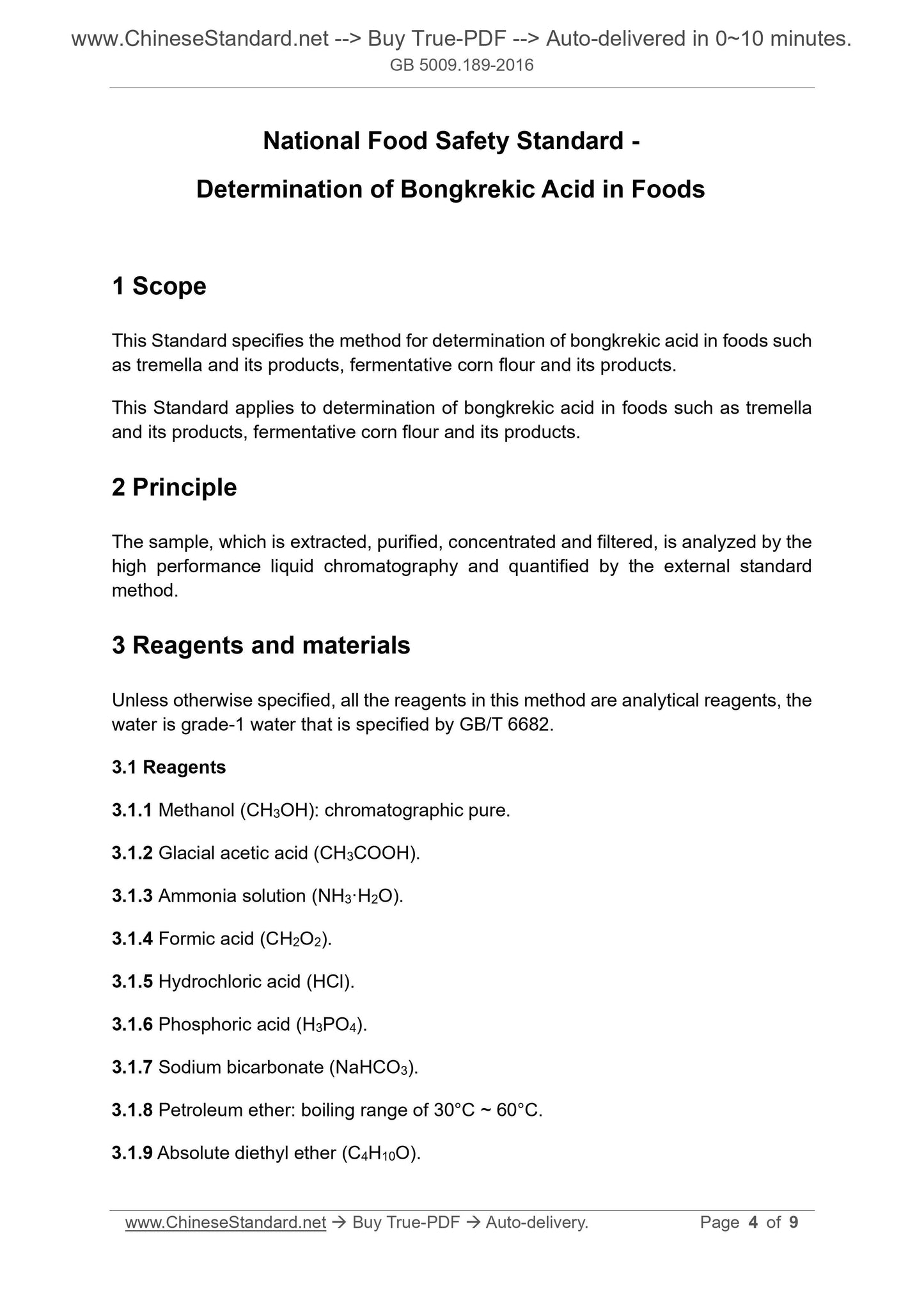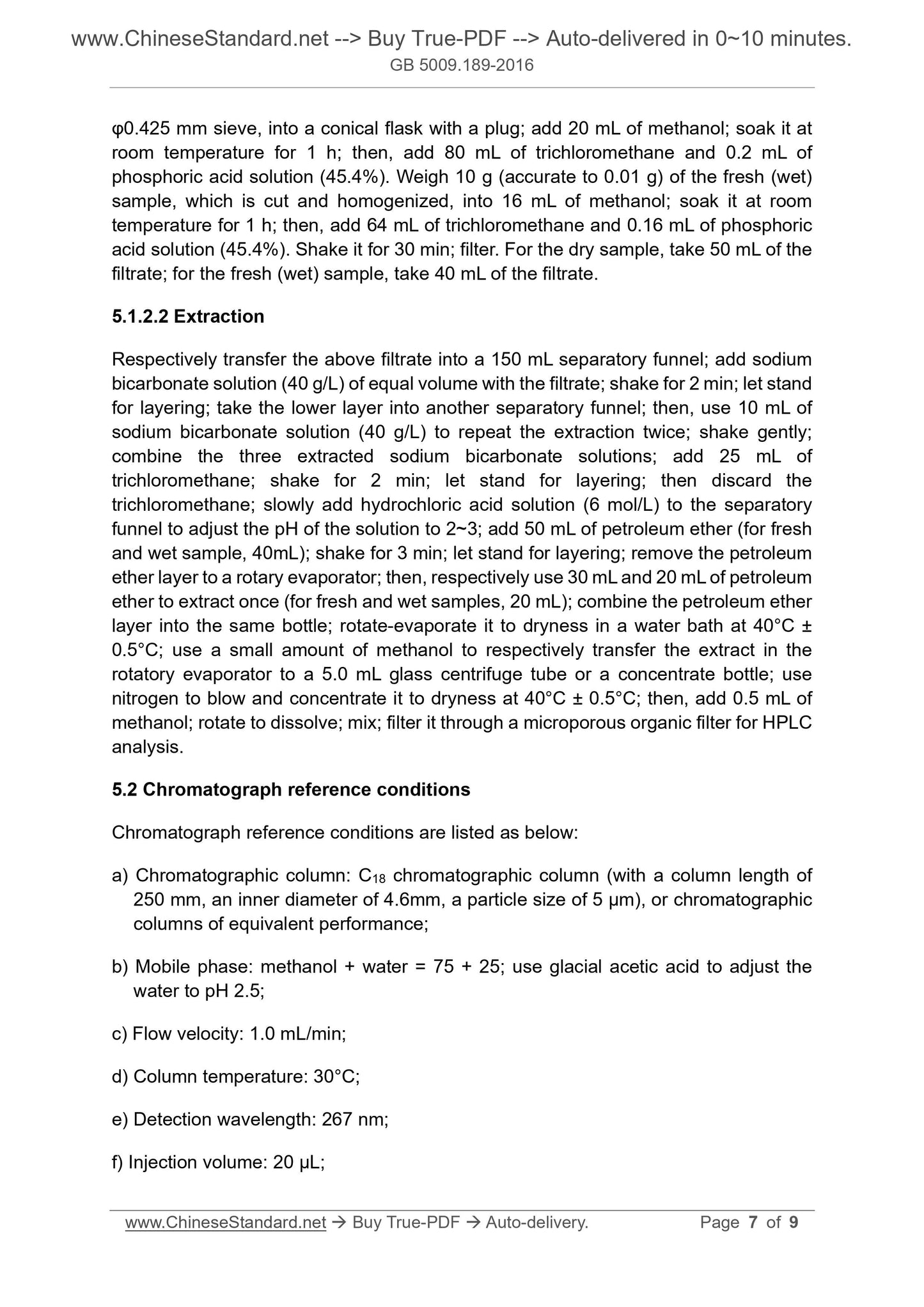1
/
of
4
PayPal, credit cards. Download editable-PDF & invoice In 1 second!
GB 5009.189-2016 English PDF
GB 5009.189-2016 English PDF
Regular price
$110.00
Regular price
Sale price
$110.00
Unit price
/
per
Shipping calculated at checkout.
Couldn't load pickup availability
GB 5009.189-2016: Determination of bongkrekic acid in tremella fuciformis berk
Delivery: 9 seconds. Download (and Email) true-PDF + Invoice.Get Quotation: Click GB 5009.189-2016 (Self-service in 1-minute)
Newer / historical versions: GB 5009.189-2016
Preview True-PDF
Scope
This Standard specifies the method for determination of bongkrekic acid in foods suchas tremella and its products, fermentative corn flour and its products.
This Standard applies to determination of bongkrekic acid in foods such as tremella
and its products, fermentative corn flour and its products.
Basic Data
| Standard ID | GB 5009.189-2016 (GB5009.189-2016) |
| Description (Translated English) | Determination of bongkrekic acid in tremella fuciformis berk |
| Sector / Industry | National Standard |
| Classification of Chinese Standard | C53 |
| Word Count Estimation | 7,714 |
| Date of Issue | 2016-12-23 |
| Date of Implementation | 2017-06-23 |
| Older Standard (superseded by this standard) | GB/T 5009.189-2003 |
| Regulation (derived from) | National Health and Family Planning Commission Notice No.17 of 2016 |
| Issuing agency(ies) | National Health and Family Planning Commission of the People's Republic of China, State Food and Drug Administration |
Share







